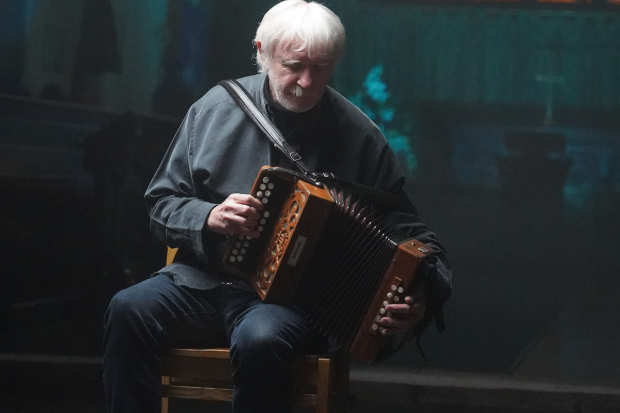
Dave Munnelly
Tracing the Influences
I first encountered Dave Munnelly’s feisty music on the albums he made back in the early 2000s, recordings infused with wit, vigour, and the spirit of the Irish traditional music of the 1920s and 30s. His playing was particularly inspired by the melodeon players of that ‘golden age’, and often featured tunes associated with John J. Kimmel, the Flanagan Brothers, and P.J. Conlon, all musicians who were based and recorded in New York during the period. Munnelly has played with various ensemble line-ups over the years, both under his own name and with other musicians and groups (Mórga, Mick Conneely), and traditional music is very much still part of his artistic output (see for instance his recent performances and recording with Joseph McNulty and Shane McGowan). He has also though cultivated a more contemporary style of accordion playing, most notably with the all-accordion group Accordion Samurai, which brings together virtuosos of the squeezebox from France, Finland and Italy in a mélange of jazz, folk and contemporary styles.
This solo album, containing ten tracks of newly composed music, inhabits a similar musical space. Munnelly mostly avoids any explicit references to Irish dance forms, and it is also hard to pin down what other types of music might have influenced these compositions. Tracing these is all down to the listener’s imagination and willingness to connect, almost like a musical game of ‘join the dots’ where the listener’s perception determines which dots are significant. One might hear echoes of a Carolan piece, a minuet, or a French or even a Nordic waltz in ‘Lily’, without it being any of these. There are, however, Irish stylistic touches that permeate the album, in some of the grace notes and other ornamentation used. The most explicitly Irish track is the set (or suite) of tunes on ‘Transparent’: the first tune is similar in its shape and syncopation to other recent compositions by groups such as Moxie, and the final tune is close to a reel or hornpipe (probably the latter given the profusion of triplets in the second part of the tune).
All the music here, as the title suggests (‘aonair’ = ‘alone’) is played almost entirely solo (with overdubbing): there is no reliance on accompanying musicians to pad out the sound or to bring additional timbres and textures. Save for the carillon of Utrecht musician Malgosia Fiebig, which bookends the poignant and beautiful air ‘Someone’, and occasional sound effects (like the coffee machine on ‘Corazon’), this album displays how the button accordion is capable of producing a surprising diversity of sounds.
Much of this is down to the mastery of Munnelly, and his exploitation of an especially expansive instrument with eighteen basses (instead of the usual eight). This allows him to create much more complex and active basslines and riffs, which is a far cry from the simple basses associated with the melodeon and early button accordions. Indeed the album begins in this manner: the first tune, ‘Knowing’, has a repeated bass riff underpinning long slow-moving melody notes, which is punctuated by crisp chords. Munnelly’s ode to coffee, the Flamenco-flavoured ‘Corazon’, also begins by exploiting the lower range of the box.
A lot of work and thought has gone into the construction of each individual track, giving them the quality of individual ‘pieces’ rather than just tunes or sets (although the notes do describe them as tunes). An excellent example is the complex ‘Aonair’, which begins with halting phrases with unusual melodic leaps; this is followed by a jauntier tune with some subtle counterpoint between the melody and the bass, with unexpected pauses and shifts into distant keys. After this the music darkens, Munnelly interspersing a slower more plaintive melody with drum-like bass notes. This builds up until suddenly the tension breaks with an unexpected and haunting vocalise, which blends well with the timbre of the accordion, before the original tune returns.
This is an impeccably recorded album, as rich in its variety of mood and expression as it is in its varied style of composition. Even though there is a lot of technically demanding playing throughout, Munnelly never sacrifices emotion and expressiveness for brash display. The sound of a door opening and closing, which is heard at the start and the end of the album, suggests to me that there is a certain interiority to this music: this is music as much for Munnelly himself as it might be for a potential listener, and to be invited into such an intimate musical world is a rare indulgence, and a rewarding one.
Visit www.facebook.com/dmmus1c/
Published on 3 October 2019
Adrian Scahill is a lecturer in traditional music at Maynooth University.

















